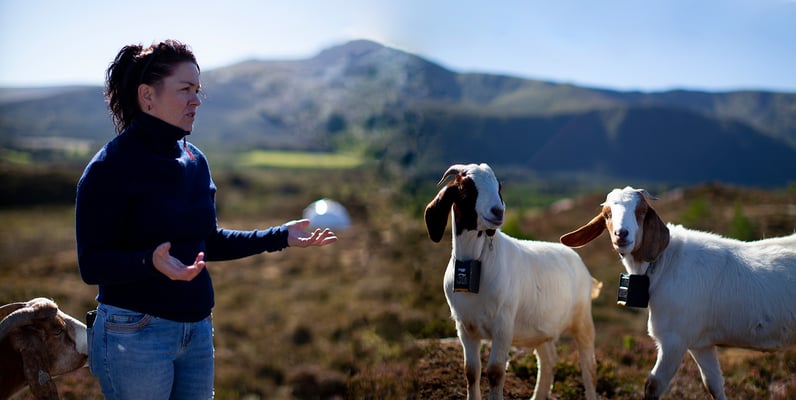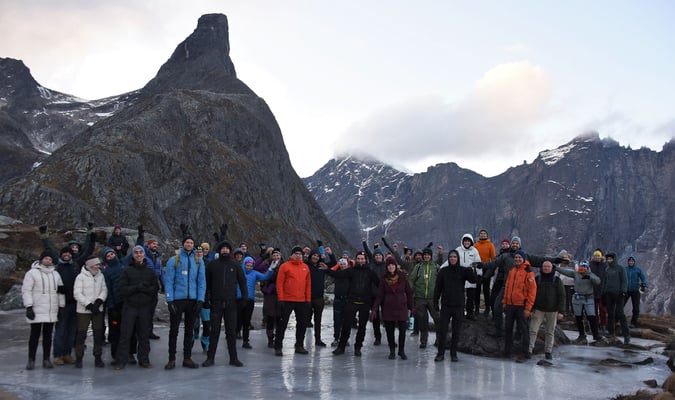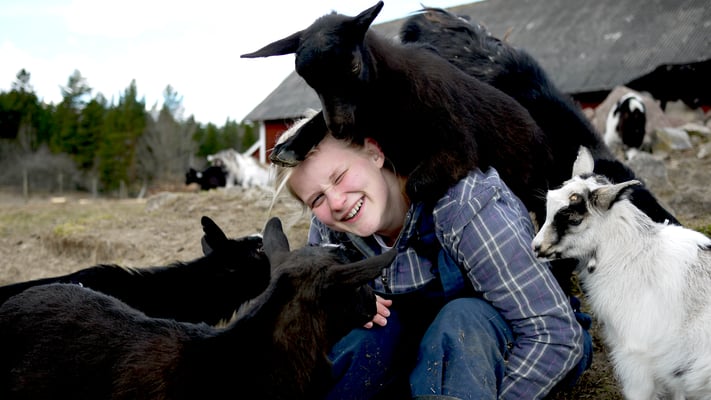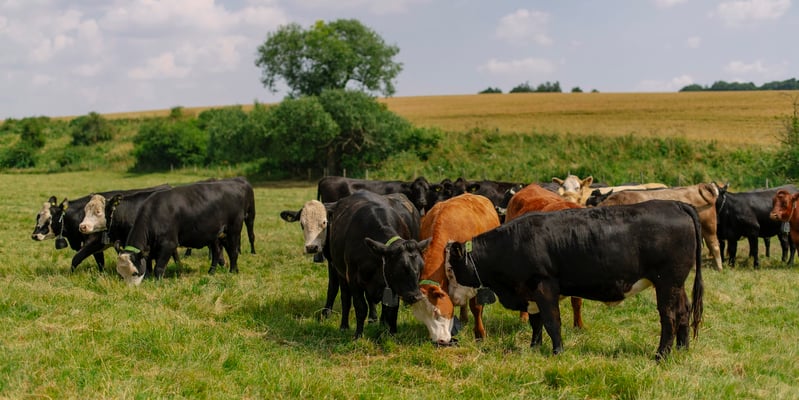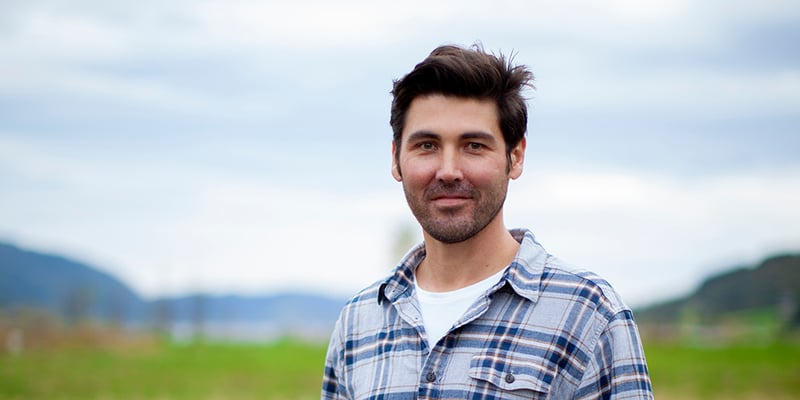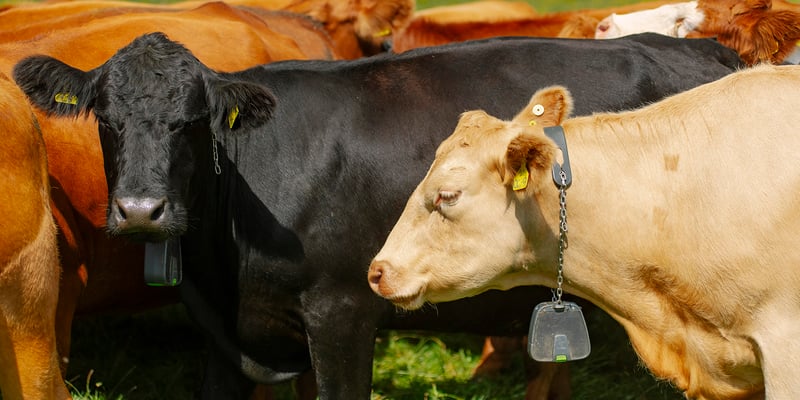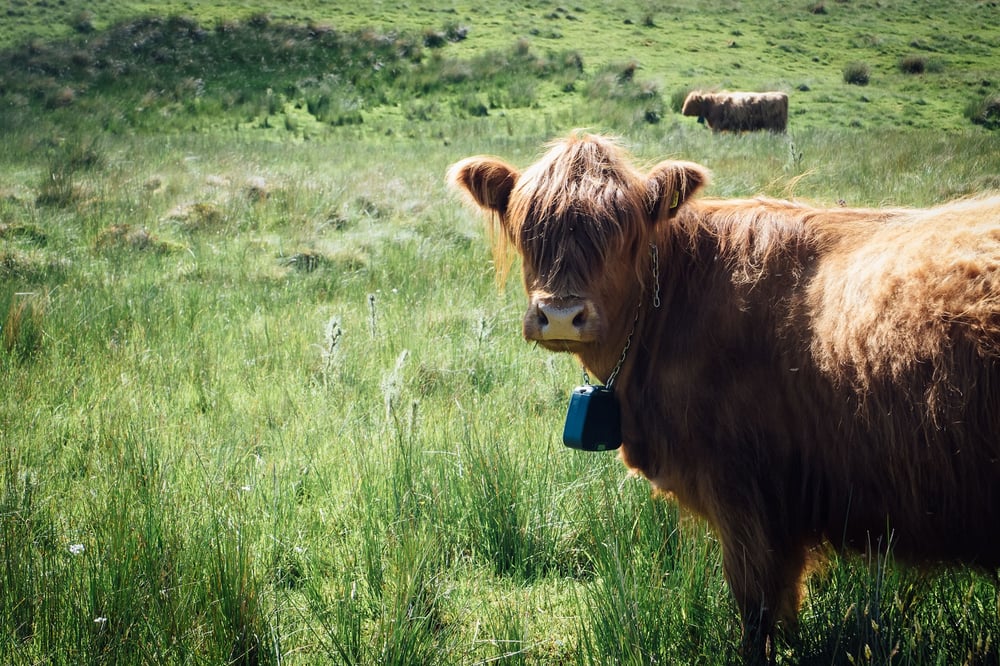
Nofence grazing with no fences on 22,672 ha
/Synne-Foss-Budal.jpg?width=65&height=65&name=Synne-Foss-Budal.jpg)
Wind whips through a Scottish Highland cow’s top notch as she walks out on a moor. Grand horns and shaggy red hair, she’s part of the rugged landscape on the northern coast of the Isle of Lewis in a scene that could be from either 150 years or 15 days ago.
Except for one thing.
Hanging around her neck from a silver chain is a small black box covered in mirrored panels that almost resemble a cowbell.
The box is the solar-powered battery for a Nofence virtual fencing collar, part of Scottish Crofter Donald MacSween’s grazing infrastructure that allows him to keep cattle in set boundaries without physical fencing.
A full-time crofter in Ness and star of the BBC Alba show “An Lot/The Croft”, Donald is in a constant balancing act of farming multiple crofts averaging 2.84 ha in size with access to 22,672 ha of common grazing on open moorland. With little to no fencing infrastructure in both the region’s crofts and common grazing land, Nofence has been Donald’s ticket to opening up new management options for his herd while reviving crofts that have previously been inactive for years.
Crofting culture
Small agricultural land units with an average size of 5 ha, crofts tend to be located on estates in the Highlands and Scottish Islands. While rights to a croft can be obtained through owner-occupancies or newly formed tenant agreements, the majority of crofts belong to generational tenants and remain within families.
However, crofts are typically rights to land only, with tenants solely responsible for infrastructure investments. Depending on the size of a croft – some being as small as 0.5 ha – many crofts remain unutilized as tenants struggle to see a return on investment.
In Donald’s region of the Outer Hebrides, referred to as the Butt of Lewis, local community members banded together to purchase the Galson Estate, putting its 22,260 ha in a community trust that is spilt out amongst crofts, local businesses, and community amenities such as a school and community centre.
“The nature of our community set-up means that decisions are made collectively amongst shareholders so while I have access to a common grazing land, I can’t just stick up a fence anywhere I want,” explains Donald. “There are pros and cons in this way of working, but our culture is to band together to do things, with a different view on land ownership than others. With the challenges crofters face in scale and investment, it works best for everyone that we work together like this.”
![]() See TikTok: Getting a lorry load of hay
See TikTok: Getting a lorry load of hay
Challenges of full-time crofting
According to Donald, the majority of crofters have separate full or part-time jobs and tend to their crofts in their free time. This was the case for him until he made the jump from full-time work for the local council authority to full-time crofting in 2017.
To make a living a few hectares at a time, Donald has had to do a lot of ducking, diving and out-of-the-box thinking to maximize both his production output and profit margins – a feat he’s navigated well enough to earn the title of 2018 Young Crofter of the Year by The Scottish Crofting Federation.
![]()
Reviving a few inactive crofts, Donald scaled his enterprise to present day numbers of 350 laying hens, four Gloucester Old Spot sows, 200 breeding ewes split between native Shetland and Hebridean breeds, Texel crosses and Blackface, and a cattle herd of eight Scottish Highlanders.
For the most part, Donald has managed to tie his croft to the local food supply with eggs sold in bulk to local shops and beef and pork sold directly to customers via meat boxes. While some lambs can supply local butcher shops, the majority are sold as stores. However, wool from the native breeds is spun into double knitting yarn and skins are sent off for tanning to be sold at a premium under Donald’s online brand Air An Lot.
Nofence grazing with no fences on 22,672 ha
While the vast common grazing area presents Donald with some unique opportunities, it requires careful navigation in how it is utilized with his croft land. Located closer to the coast near villages, crofts typically consist of machair, a fertile grass plain, and peat with a May to September growing season.
To maximize growth rates with minimal feed inputs, the commercial flock is rotationally grazed on the crofts year-round. The hefted native flock and cattle remain on moorland for the majority of the year, only coming in for lambing and calving when the crofts can support them at peak grass growth periods in May and June.
With nothing but a boundary fence to keep stock out of villages on the 22,672 ha of common grazing land, the introduction of cattle to the business presented Donald with a substantial herd management challenge.
“I could easily spend upwards of two hours trying to track cattle down on the moorland just to check if they were ok,” he says.
![]()
Scrolling through Twitter one day on the hunt for a livestock location tracker, he came across Nofence virtual fencing technology. Utilizing GPS to track animal location and set virtual fencing boundaries, Nofence collars give cattle audio cues as they approach the virtual fence, administering a single pulse if they exit the boundary. Using the Nofence app on a mobile device, users can track the real-time location of stock, view a heat map of their previous movements, be sent an immediate alert if they have escaped the boundary and map out grazing paddocks.
It was everything he was looking for, Donald says.
![]()
See TikTok: Putting the geofencing collars on for the first time
After receiving funding from the Crofting Agricultural Grant Scheme, Donald introduced the technology to his heard in late October 2021. To train his cattle to learn how to graze within a virtual fence by utilizing their hearing, he turned the cattle out onto a fenced croft, splitting it in half with a single virtual boundary.
“I was surprised at how quickly they learned how to work with the audio cues to know where their boundary was and how well it kept them contained,” says Donald. “It only took a few days for them to get it.”
Once the cattle were trained, Donald created 12 virtual paddocks around 238 ha each on the common grazing land for cattle to be rotated through. Since then, he’s also worked with his local RSPB site to graze 5 ha conservation land that has previously been untouched by livestock due to a lack of fencing infrastructure and large boggy areas.
“Within the Nofence app, I’ve been able to create a paddock on the RSPB land, making exclusion zones inside it so cattle will avoid going into those areas,” he says.
![]()
See TikTok: Conservation grazing using geofencing collars
One of the biggest opportunities Nofence has given Donald is the ability to graze land that has previously been untouched for years.
“The common grazing moorland has so many parts that don’t get grazed out properly, which is something I can achieve by being able to manage my herd’s grazing with virtual paddocks,” he says.
It’s also going to be key to his plan to revitalize more inactive crofts in the region.
“There are a lot of collective crofts that are unused and overgrown because there are no fences to allow for grazing. This is going to allow me to put a lot of crofts back into use without having the additional cost of permanent or temporary fencing,” says Donald.
Peace of mind
Aside from grazing management, Nofence has brought Donald a great deal of peace of mind with the ability to track the movements and locations of his herd – not to mention time.
“With a high amount of tourists on the moor, it’s not uncommon for a gate near a village to get left open and for stock to end out on the road. And due to some of the boggy areas on the common grazing land, I do worry about cattle getting and not found in time,” he says.
If an animal ever goes for a long period without moving, the Nofence app sends an alert to users so they can go locate stock immediately. And with the real-time tracking ability, it now takes Donald 15 minutes to check his herd rather than hours.
“Nofence has given me so much peace of mind in being able to tell where my cattle are at and to keep an eye on their activity,” he says. “We’re still early days with this technology but it has already opened up so many more opportunities for how the beef herd is managed now and how we will manage it going forward.”
